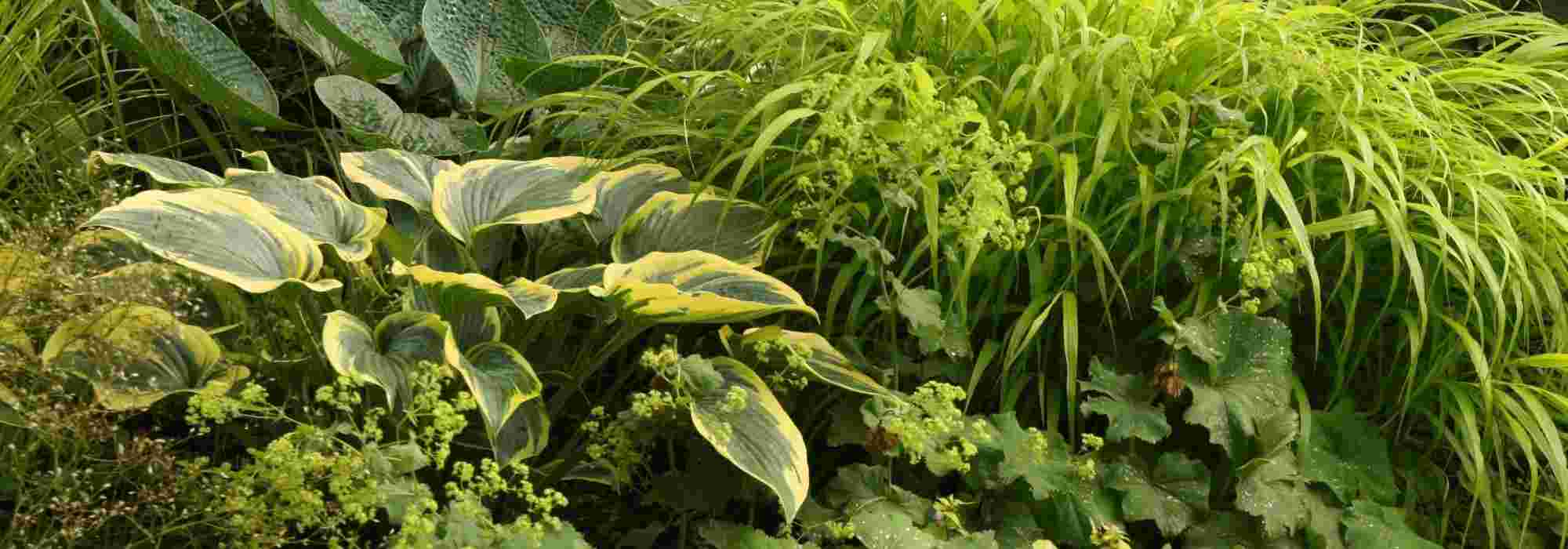
12 perennials for heavy, wet soil
Our selection
Contents
Your soil is damp and heavy. As soon as it rains (and sometimes not even that…), you end up slogging through a kind of mud that clings to your boots, weighing down every step. While draining and lightening soil are often suggested as solutions, bear in mind that it’s a long and tedious process. So you despair of ever having a beautiful garden on such soil. And yet… Did you know that many perennials are happy to slip their roots or rootstocks into heavy, waterlogged soil? Here is a small selection.
Creeping Bugle: a groundcover for heavy soils
Extraordinary evergreen groundcovers, Ajuga reptans or creeping bugles have glossy dark green or purple foliage. They spread very quickly by means of stolons to form dense tapetum, with blue, pink or white flowers depending on variety, appearing from May to July.
Bugles are often thought of as having blue or white flowers, but pink flowering is sometimes overlooked, as with variety ‘Purple Torch’, absolutely magnificent. This perennial groundcover is clearly indispensable for wet, clay soils. Ajugas appreciate partial shade, even shade, but tolerate sun very well if soil is sufficiently moist.
- There are many different Ajuga varieties, find them in our online nursery.
- Want to know more about bugles? Follow this link: Creeping bugle, Ajuga: planting, to grow and care for.
Astilbes: the candy-floss of the marshes
Like little botanical “cotton candy”, Astilbes are superb and very floriferous provided they have enough water. Their magnificent plume-like flowers, pink, white, red or even violet, appear from June to September depending on variety, such as ‘Veronica Klose’, which offers magenta plumes. Another advantage: flowering enlivens garden between late spring flowering and early summer flowering. Astilbes, broadly speaking, are perennial plants of heavy, wet soil and are, consequently, welcome on pond banks and in marshy ground. They enjoy partial shade without direct sun.
- Find our wide selection of Astilbes in our online nursery: our large choice of Astilbes.
- For everything about Astilbe cultivation, head to our article: Astilbe: planting, cultivation and maintenance.
Discover other Astilbe - False Goatsbeard
View all →Available in 1 sizes
Available in 1 sizes
Available in 0 sizes
Available in 3 sizes
Available in 3 sizes
Available in 2 sizes
Available in 1 sizes
Available in 2 sizes
Available in 3 sizes
Available in 1 sizes
Meadowsweet: robust yet airy
Filipendula, or meadowsweet, are splendid perennials for moist soil. They produce a summer flowering of airy plumes of white, red or pink flowers, such as Filipendula purpurea, and boast superbly divided foliage. These are remarkable plants for brightening woodland. Wild and elegant, they suit all garden types provided soil stays sufficiently moist in summer. Filipendula thrive in sun or partial shade in all soil types, even heavier soils, fresh to moist, by water and in naturalistic borders.
- Find all our Filipendula in our online nursery.
- To learn more about this charming perennial, read Filipendula, Meadowsweet: planting and care.
Read also
Gardening in heavy, wet soilHostas: majestic and hardy
Hosta or Funkia is a popular perennial prized for its large ovate or cordate leaves, which take on superb colours that vary with numerous varieties: it can be green, blue-green, sometimes golden, often variegated with white or cream… Fragrant flowering in clusters of bell-shaped flowers is equally notable and lasts throughout summer. Sometimes small, sometimes enormous, Hosta slowly spreads to form large clumps, pushing neighbouring plants aside, making it an ideal groundcover for shade. This trouble-free perennial likes shade and moisture and tolerates heavy, clay soils very well. Variegated or golden-leaved varieties are ideal for bringing brightness to shaded areas under trees. Hosta spreads to form large clumps, pushing neighbouring plants aside, making it an ideal groundcover for shade. Note that it can also be grown in a pot.
- Find our selection of splendid Hostas in our online nursery.
- To learn all about Hostas, read Hosta: our planting, cultivation and maintenance advice for the garden
Ligularias: imposing and spectacular
Ligularias or ligularias are large perennials with lush foliage, lit up by a summer flowering of vivid yellow. Flowering in heads, themselves grouped into sprays or upright clusters, appearing from July to September depending on species or variety: for example ‘The Rocket’ with long clusters of yellow flowers. But ligularias are also highly decorative thanks to their architectural foliage, rounded or palmate in shape, sometimes deeply divided. This foliage turns a dark green or purple at flowering, which makes it stand out even more. They are vigorous, robust plants, rather easy to grow if given enough water. Ligularias like shade and heavy, clay soils and, above all… moist conditions!

Ligularia stenocephala ‘The Rocket’
- Find all our ligularias in our online nursery. Have a question about ligularias? Find the answer in Ligularia, Ligularia: tips for planting, growing and caring for
Purple loosestrife: a superb native!
Lythrum salicaria or common loosestrife is a handsome native perennial found here in all wet or marshy soils. It is valued for its superb flowering between July and August in long upright spikes lined with flowers of a vivid carmine-pink. It forms handsome erect clumps clothed in willow-like foliage, as decorative as a bush. This very hardy plant tolerates all wet soils, even the heaviest, provided they are not excessively acidic. Loosestrife thrives in a sunny position or in partial shade. Variety ‘Robert’ combines all qualities of the type species but is more compact.
- To find out everything about this perennial plant, discover our fact sheet: Loosestrife, Lythrum: planting, care
Rodgersia : imposing and exotic
Rodgersias are large, majestic Asian perennials for cool to moist locations. Over the years they form impressive clumps of large palmate leaves adorned with a wispy summer flowering in white, pink or creamy yellow depending on species or variety. This perennial prefers deep, humus-bearing, acidic, cool or even moist soils, and suits a shady or partially shaded position. Its only slight drawback is that it needs at least three years to establish well, but thereafter no more trouble with this very hardy plant!
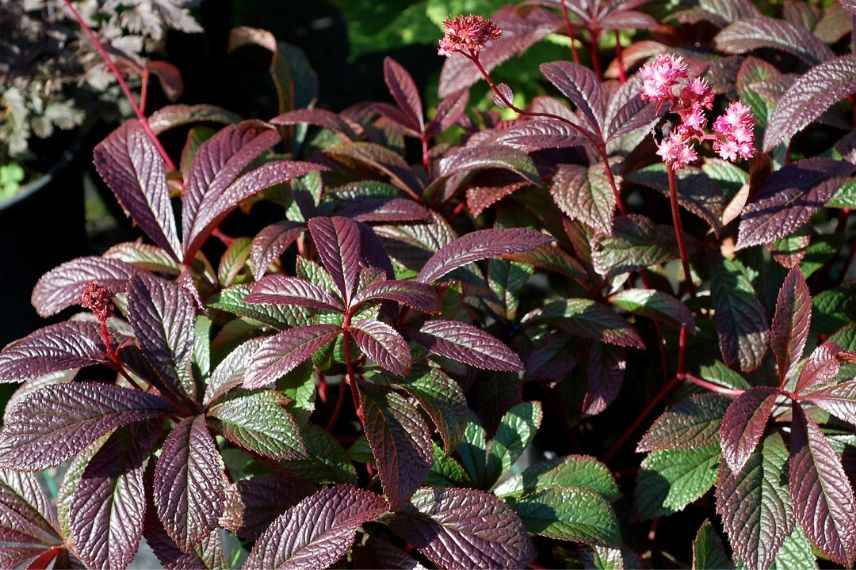
Rodgersia pinnata ‘Bronze Peacock’ (©Terra Nova Products)
- Find our selection of Rodgersias in our online nursery.
- If you want to know everything about this remarkable perennial, read Rodgersia: planting, cultivation and care.
- Watch Olivier’s video on Rodgersia
Matteucias: ferns for waterlogged soils
Matteuccia struthiopteris, also called Ostrich fern or Ostrich plume, is a large, handsome fern with a spreading habit, a very graphic appearance and particularly ornamental in the beneficial shade of a few trees. This fern produces a cluster of large sterile fronds, feathery, pale green and slightly translucent when young in early spring. Sterile fronds disappear in winter to give way to small fertile fronds of olive-green turning quickly to brown, persistent throughout winter. Extremely hardy, this fern is easy to grow in cool, slightly acidic soil, in partial shade or even in light shade. It will even naturalise if it thrives without ever becoming invasive.
- Fascinated by ferns? Discover our plant sheet: Ferns: how to plant, care for and grow them.
Persicaria knotweeds: floriferous and self-seeding
Persicaria knotweeds or simply Persicarias are superb perennials that flower for a long time from July onwards in countless spikes of flowers in shades of white, pink or red, which sometimes last until first frosts. These plants with very fine inflorescences, borne on tall stems, are perfect in a garden with a slightly wild look. Some varieties even have very decorative variegated or coloured foliage. Once well established, in sun or partial shade, in fresh, even moist soil and even in heavy soils, Persicaria becomes very vigorous and eventually… takes its place in an assertive manner.
- We have selected the most beautiful varieties of Persicarias, find them in our online nursery.
- Any doubts or questions? Find all our advice to succeed with Persicarias in Persicarias or Knotweeds: planting, growing and care.
Virginia speedwell: gentle and elegant
Veronicastrum virginicum or Virginian veronicas,here the ‘Red Arrows’ variety, are perennials related to speedwells, native to North America. These majestic plants are surprisingly little known among gardeners. Yet they are magnificent at flowering in delicate spikes of feathery flowers — white, pink, mauve or purple — arranged in curious candelabra that can reach up to 2 metres above ground. These flowers, highly melliferous, add verticality and lightness to borders from June. Virginian veronicas are very hardy plants that will establish for many years in sun or partial shade, in any good rich soil, even heavy and remaining cool, or even in waterlogged soil.
- Find all our Veronicastrum in our online nursery.
Chinese gooseneck loosestrife: a graceful plant that naturalises
Lysimachia clethroides is called Chinese Lysimachia or gooseneck Lysimachia owing to its remarkable white, curved spike-shaped inflorescences appearing between July and August. In groups, these regularly spaced inflorescences all point in the same direction, creating a distinctive effect. Lanceolate foliage is a lovely light green until late summer, then turns red and orange in autumn before disappearing completely in winter. This is a very hardy perennial whose running rootstocks spread rapidly in fresh to moist soil, so much so that plant can double in size in just two years. Plant this perennial in full sun or partial shade in heavy, rich and very moist soil.
- Discover our Lysimachia collection in our online nursery.
- For everything about growing Lysimachia, see our information sheet “Lysimache, Lysimachia: planting, care and propagation“
Herb of Japan: a striking Japanese grass
Native to Japanese woodland understories, Hakonechloa macra, or Japanese herb, forms over the years attractive clumps of arching, trailing leaves that resemble layered cascades. The variety ‘Aureola’ is unmatched for brightening a shady spot with its golden foliage, but other equally colourful varieties exist. As it is semi-evergreen, it retains decorative foliage for most of the year. It grows in shade in fresh, humus-rich soil. Clayey, heavy, wet soils don’t faze it: on the contrary, it thrives in them! Hakonechloa are perfect alongside Hostas, Heucheras and ferns, but can also be grown in pots.
- Find all our splendid varieties of Hakonechloa macra in our online nursery.
- To learn all about growing Japanese herb, read Hakonechloa, Japanese herb: planting, cultivation and care
- Subscribe!
- Contents
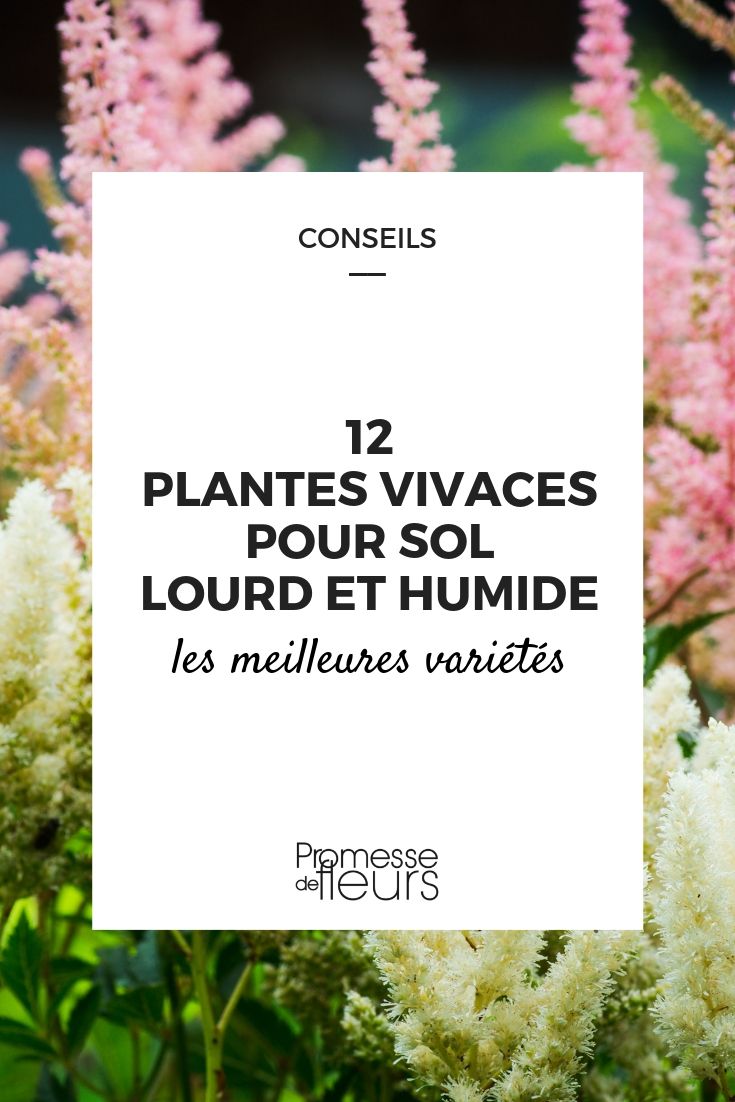
































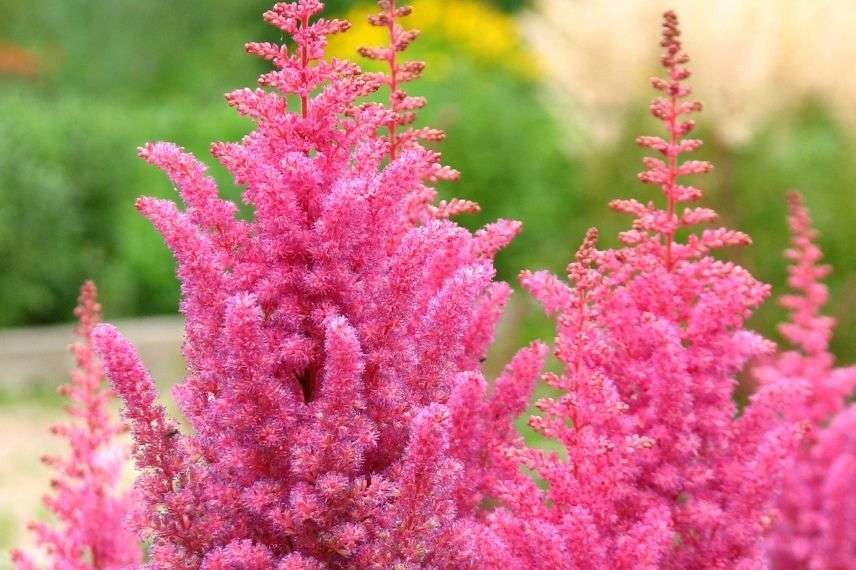
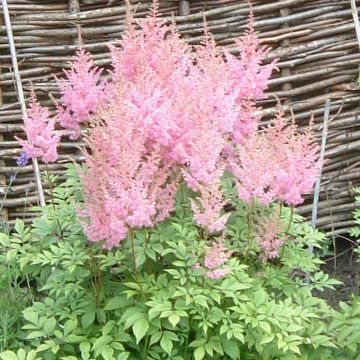
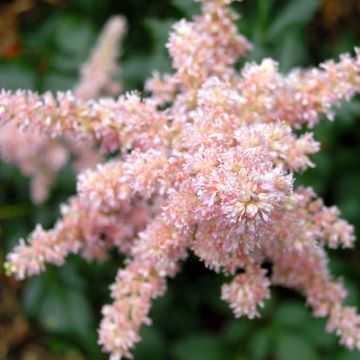
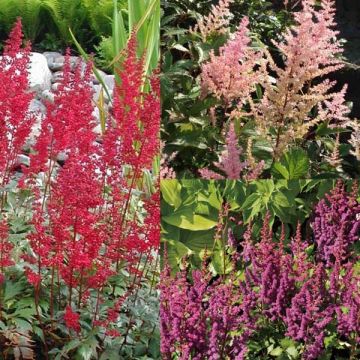
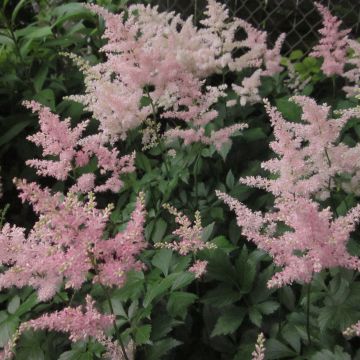
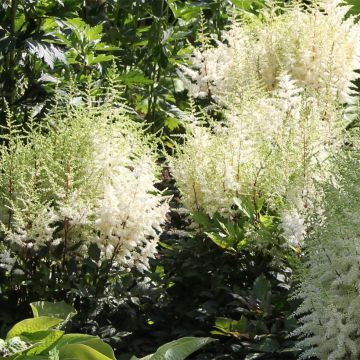
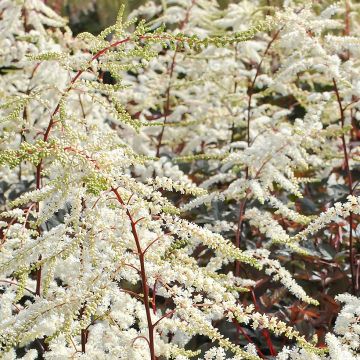
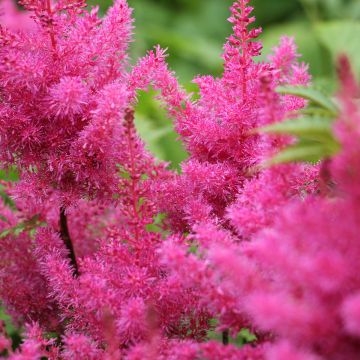

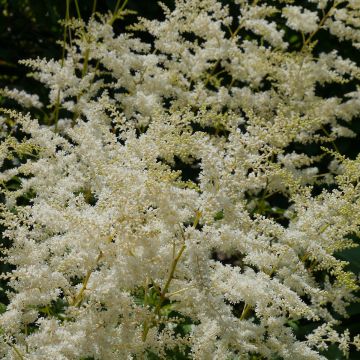
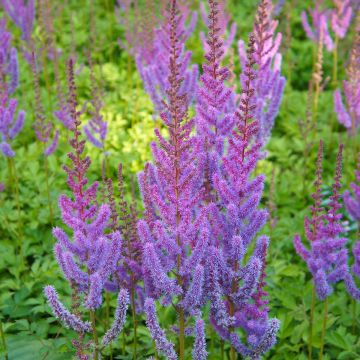
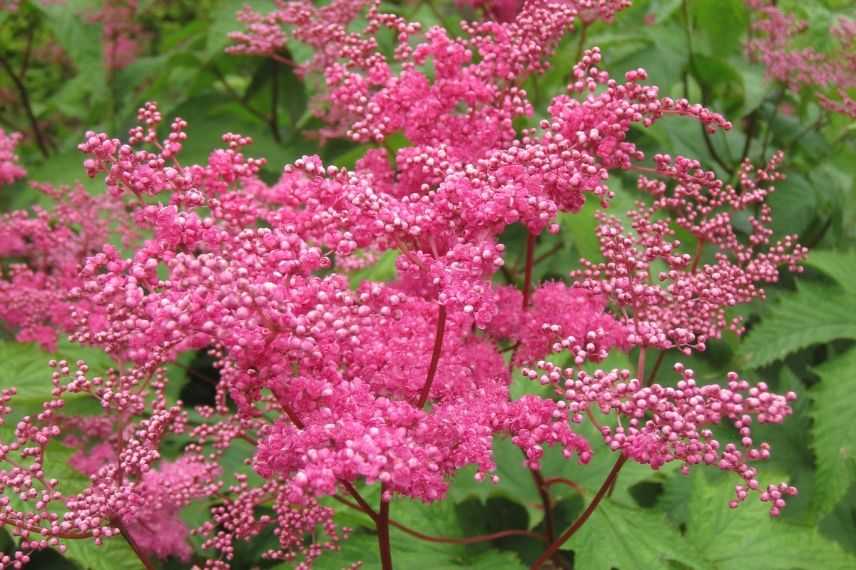
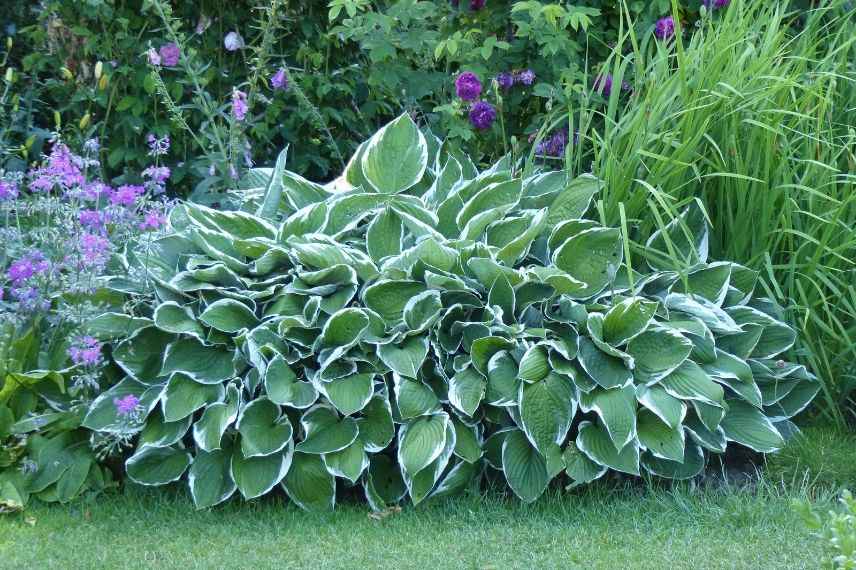
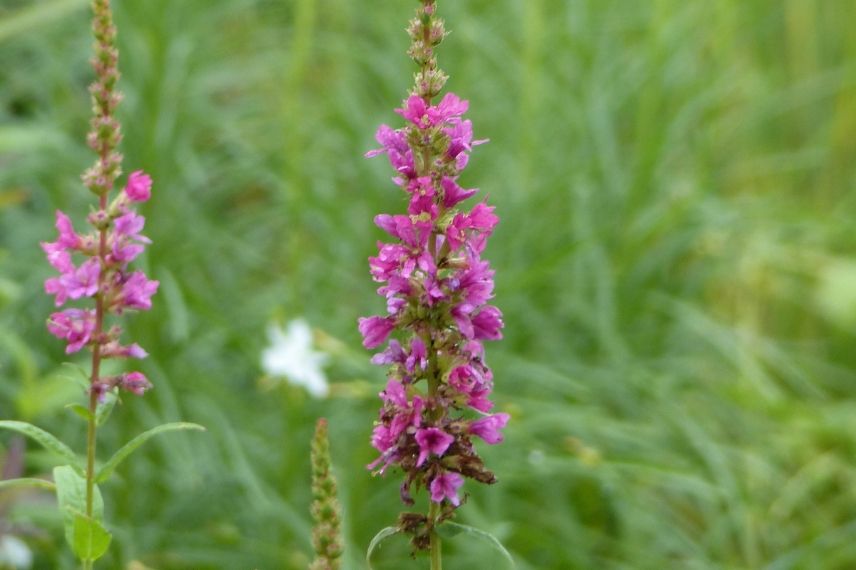

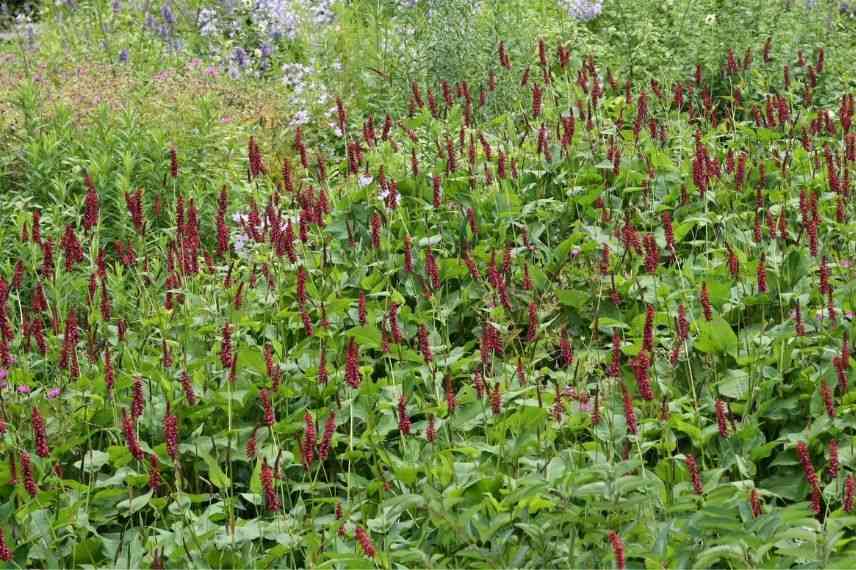
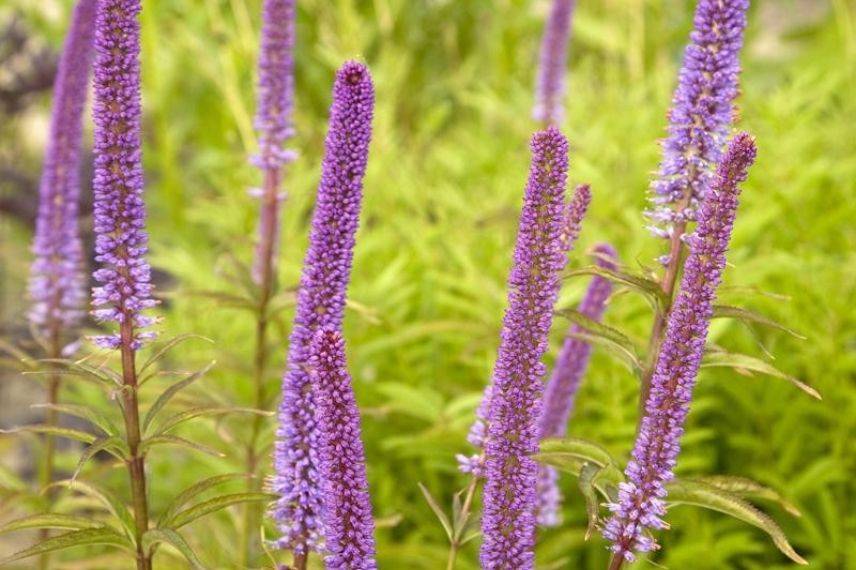
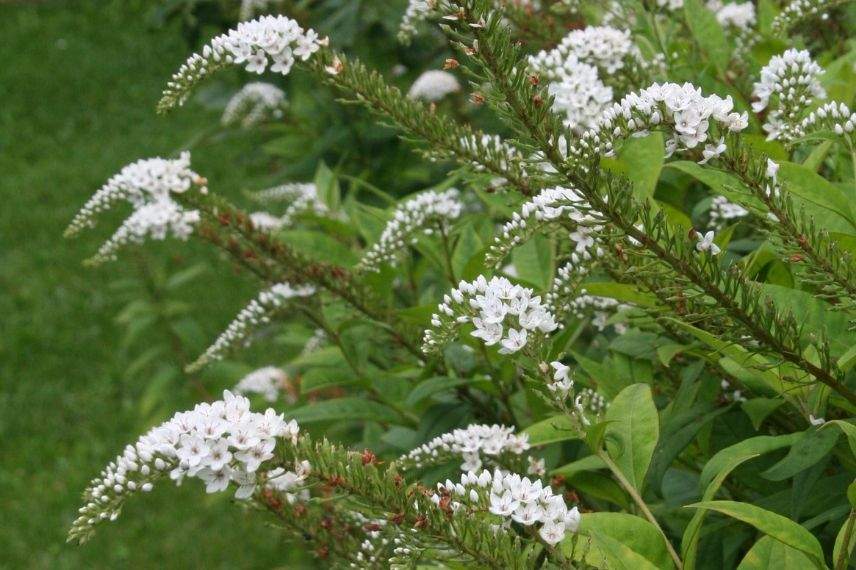
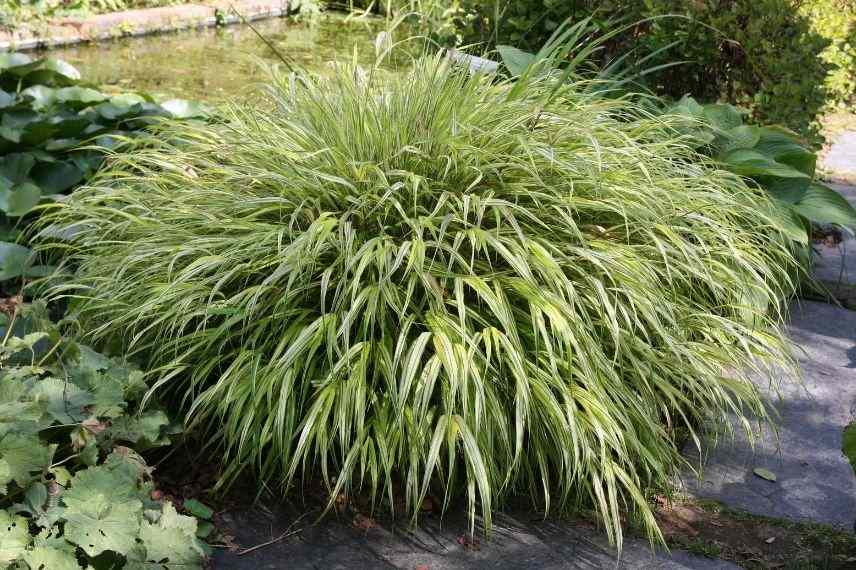
Comments